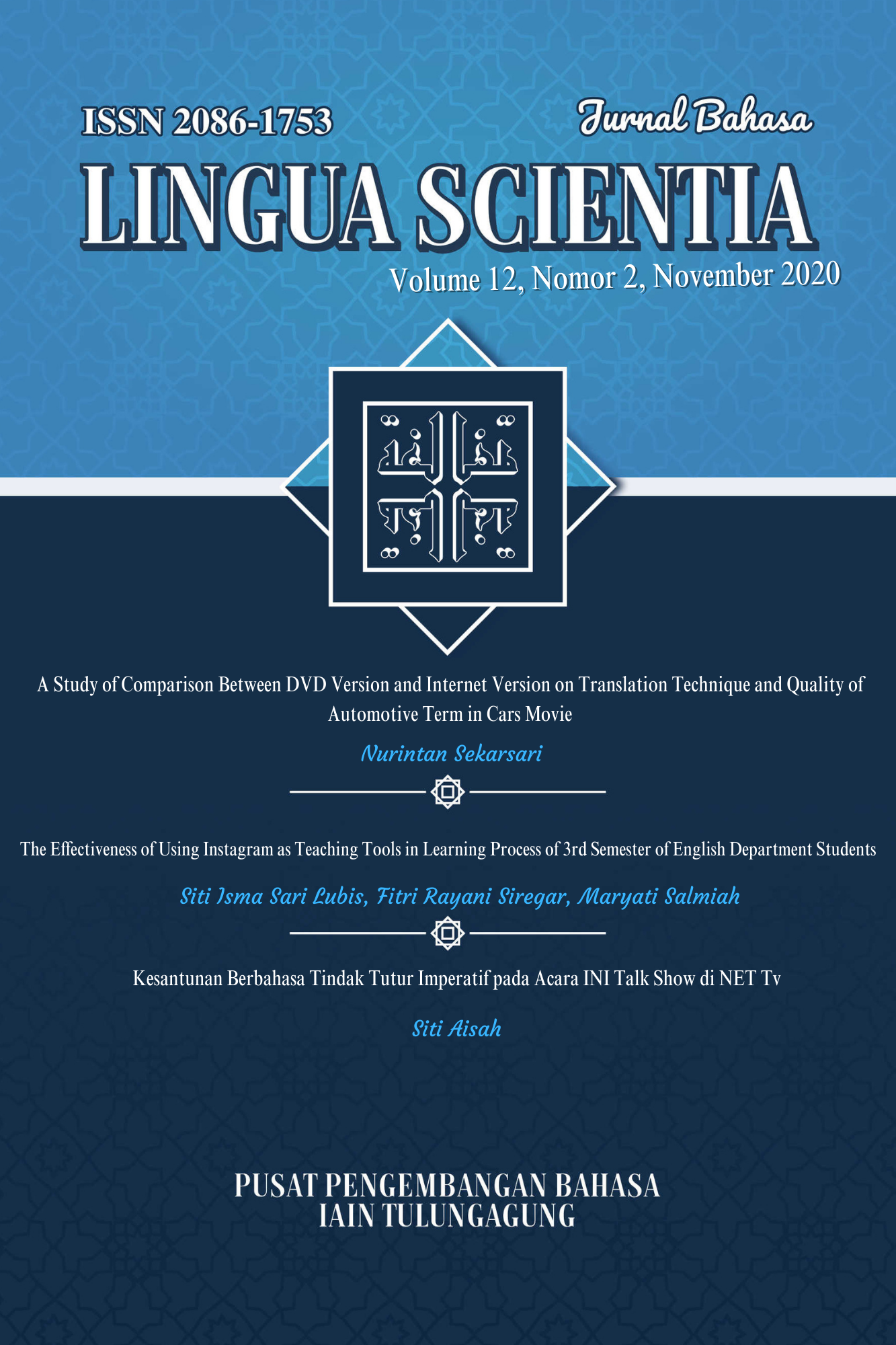Enhancing Learner Autonomy in Extensive Listening Class through the Listening Logs
Abstract
Abstract: Mastering listening skill has been a great burden for intermediate to upper-intermediate students in Indonesian EFL context. The absence of real life exposures to native speakers of English strengthens student’s reluctance to frequently practice listening to English. Therefore, this paper will propose the listening logs applied in an extensive listening class to enhance student’s autonomy in improving their listening skill. The article will begin by highlighting some challenges faced by students in Listening class and some possible strategies to deal with them will be presented further. Later, relevant theories on extensive listening and learner autonomy will be discussed. Next, the author will introduce the listening logs followed by the procedures on how this is planned, implemented and evaluated. This paper offers an alternative for teachers to promote students’ in and out of class learning regarding their own pace and interest in extensive listening practice.Downloads
References
Astika, G. (2015). Extensive Listening: Design and Its Implementation. the 62nd TEFLIN International Conference (pp. 287-294). Bali: Udayana University Press.
Benson, P. (2011). Teaching and Researching Autonomy. London: Routledge.
Brown, S. (2006). Teaching Listening. Cambridge: Cambridge University Press.
Chang, A., & Millet, S. (2014). The Effect of Extensive Listening on Developing L2 Listening Fluency: Some Hard Evidence. ELT Journal, 68(1), 31.
Chick, A. (2014). Digical Gaming and Language LEarning: Autonomy and Community. Language Learning and Technology, 18(2), 85-100.
Cotterall, S. (2000, April). Promoting Learner Autonomy through Curriculum: Principles for Desining Language Courses. ELT Journal, 54(2).
Gilliland, B. (2015). Listening Logs for Extensive Listening Practice. In D. Nunan, & J. Richards, Language Learning beyond the Classroom (p. 15). New York: Routledge.
Hapsari, Y., & Ratri, D. (2014, October). Extensive Listening: Let Students Experience Learning by Optimazing the Use of Authentic Materials. Bahasa Sastra, 14(2), 50-62.
Jacobs, G. M., & Farrel, T. S. (2001, April). Paradigm Shift: Understanding and Implementing Change in Second Language Education. TESL-EJ, 5(1).
Kemp, J. (2010, October). The Listening Log: Motivating Autonomous Learning. ELT Journal, 64(4), 385-395.
Little, D. (2007). Language Learner Autonomy: Some Fundamental Considerations Revisited. Innovation in Language Learning and Teaching, 1(1).
Nation, I., & Newton, J. (2009). Teaching ESL/EFL Listening and Speaking. New York: Routledge.
Reinders, H., & White, C. (2011). Special Issue Commentary, Learner Autonomy and New Learning Environment. Language Learning and Technology, 15(3), 1-3.
Renandya, W., & Farrel, T. (2011). Teacher, the Tape is too Fast! Extensive Listening in ELT. ELT Journal, 65(I), 52-59.
Richards, J. (2008). Teaching Listening and Speaking, from Theory to Practice. Cambridge: Cambridge University Press.
Waring, R. (2008). Starting Extensive Listening. The Journal of Extensive Reading in Japan, I(I).
Warschauer, M., & Liaw, M.-L. (2011). Emerging Technologies for Autonomous Language Learning. Studies in Sefl-Access Learning Journal, 2(3), 107-118.
Copyright (c) 2020 Faizatul Istiqomah

This work is licensed under a Creative Commons Attribution-NonCommercial 4.0 International License.
Before going to review process, all manuscripts will be checked that they are free from plagiarism practice using "Turnitin" software. If there is an indication of plagiarism, the manuscript will instantly be rejected.


